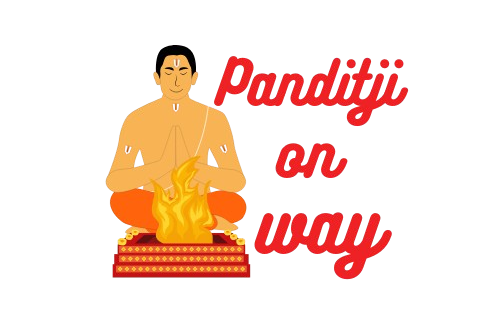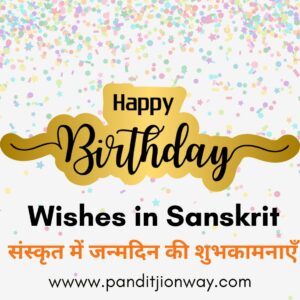What is Difference Between Hanuman Chalisa, Bajrang Baan, Sankat Mochan
Difference Between Hanuman Chalisa, Bajrang Baan, Sankat Mochan: When it comes to Hindu devotional hymns dedicated to Lord Hanuman, three texts stand out prominently—Hanuman Chalisa, Bajrang Baan, and Sankat Mochan. Each of these has its own significance, structure, and purpose. While some devotees chant all three regularly, others may prefer one over the other based on their spiritual needs.
But if you’re feeling overwhelmed or confused about which one to read, here’s a simple truth—“Jo padhne mein maza aa raha hai, wahi padhiye!” (Read the one that brings you joy!) And if even that feels difficult, just chant “Ram Ram”—because devotion matters more than rituals.
Now, let’s dive into a detailed comparison of these three powerful hymns.
1. Hanuman Chalisa: The Most Popular Devotional Hymn
Origin & Composition
-
Composed by: Goswami Tulsidas (16th century)
-
Language: Awadhi (a dialect of Hindi)
-
Structure: 40 verses (hence called “Chalisa”)
Significance & Benefits
-
Devotional Praise: Focuses on Hanuman’s virtues, strength, and devotion to Lord Rama.
-
Removes Fear & Obstacles: Believed to protect from evil spirits and negative energies.
-
Easiest to Recite: Simple language and rhythmic structure make it widely popular.
When to Recite?
-
Daily practice for spiritual strength.
-
Tuesdays & Saturdays (considered auspicious for Hanuman worship).
-
During times of distress or when seeking courage.
Key Features
-
Begins with the Doha (couplet) invoking Hanuman’s blessings.
-
Describes Hanuman’s childhood, adventures in Ramayana, and his divine powers.
-
Ends with a prayer for Hanuman’s constant presence in the devotee’s life.
2. Bajrang Baan: The “Arrow” of Hanuman’s Power
Origin & Composition
-
Attributed to: Saint Tulsidas (though some debate exists)
-
Language: Sanskritized Hindi with intense invocations
-
Structure: More aggressive in tone compared to Hanuman Chalisa
Significance & Benefits
-
Powerful Protective Shield: Acts like a spiritual weapon against enemies and dangers.
-
Removes Severe Problems: Used in cases of black magic, deep fears, or major life crises.
-
Intense Energy: Creates a strong vibration when chanted with devotion.
When to Recite?
-
In extreme distress (e.g., legal troubles, health crises, or enemy threats).
-
Preferably in the morning or evening after a bath.
-
Should be recited with full focus and discipline.
Key Features
-
Uses strong, commanding language (e.g., “Bajrang Bali ki jai!” repeatedly).
-
Contains “ban” (arrow) imagery, symbolizing Hanuman’s fierce protective power.
-
More tantric in approach compared to the devotional tone of Hanuman Chalisa.
3. Sankat Mochan: The Crisis Remover
Origin & Composition
-
Composed by: Saint Tulsidas (like the other two)
-
Language: Awadhi/Sanskrit mix
-
Structure: Shorter than Hanuman Chalisa but potent in its own way
Significance & Benefits
-
Quick Relief from Problems: As the name suggests (“Sankat Mochan” = “Remover of Troubles”).
-
Calming Effect: Helps reduce anxiety and mental stress.
-
Used in Hanuman Temples: Often recited during special pujas.
When to Recite?
-
When facing sudden problems (financial, health, or emotional).
-
Can be chanted daily or during Hanuman Jayanti.
-
Works well as a fast-acting prayer.
Key Features
-
Shorter than Hanuman Chalisa but equally powerful.
-
Focuses on Hanuman’s ability to instantly solve problems.
-
Often recited along with Hanuman Aarti in temples.
Comparison Table: Hanuman Chalisha vs. Bajrang Baan vs. Sankat Mochan
| Feature | Hanuman Chalisa | Bajrang Baan | Sankat Mochan |
|---|---|---|---|
| Author | Goswami Tulsidas | Attributed to Tulsidas | Goswami Tulsidas |
| Language | Awadhi | Sanskritized Hindi | Awadhi + Sanskrit |
| Tone | Devotional, calm | Aggressive, commanding | Comforting, humble |
| Purpose | Daily peace, mental strength | Extreme protection & danger removal | Quick relief from everyday troubles |
| Best Time to Recite | Daily, esp. Tue/Sat | During fear, crisis, attacks | During sudden distress |
| Vibrational Energy | Uplifting & rhythmic | Fierce & explosive | Soothing & healing |
| Recitation Difficulty | Easy | Medium to Difficult | Easy |
| Spiritual Vibe | Balanced devotion | Warrior-like invocation | Compassionate and solution-focused |
Similarities Between Hanuman Chalisa, Bajrang Baan & Sankat Mochan
-
Composed by Tulsidas (or attributed to him) – All three are linked to the great saint.
-
Dedicated to Hanuman – Focus on his strength, devotion, and protective powers.
-
Chanted for Protection – Each helps in overcoming difficulties in different ways.
-
Used in Hanuman Worship – Commonly recited in temples and homes.
-
Powerful Mantra-like Effect – Regular recitation brings spiritual and mental benefits.
Which One Should You Read?
-
If you want daily peace & courage → Hanuman Chalisha (most balanced).
-
If you’re facing extreme fear or enemies → Bajrang Baan (like a spiritual shield).
-
If you need quick problem-solving → Sankat Mochan (fast-acting prayer).
But remember:
-
“Jo padhne mein maza aa raha hai, wahi padhiye!” (Read what brings you joy!)
-
If even that feels difficult, just chant “Ram Ram” or “Jai Hanuman”—devotion matters more than complexity.
Final Thoughts
While all three hymns serve different purposes, their ultimate goal is the same—to connect with Hanuman’s divine energy. Whether you choose the calming Hanuman Chalisa, the fierce Bajrang Baan, or the quick-relief Sankat Mochan, what matters is faith and sincerity.
So, don’t stress too much—pick the one that resonates with you and start chanting! And if nothing else, just remember:
“Ram Ram bolne se sab theek ho jata hai!” (Chanting “Ram Ram” makes everything alright!)
Jai Shri Ram! Jai Hanuman!
Read More – Full Hanuman Chalisha Lyrics



